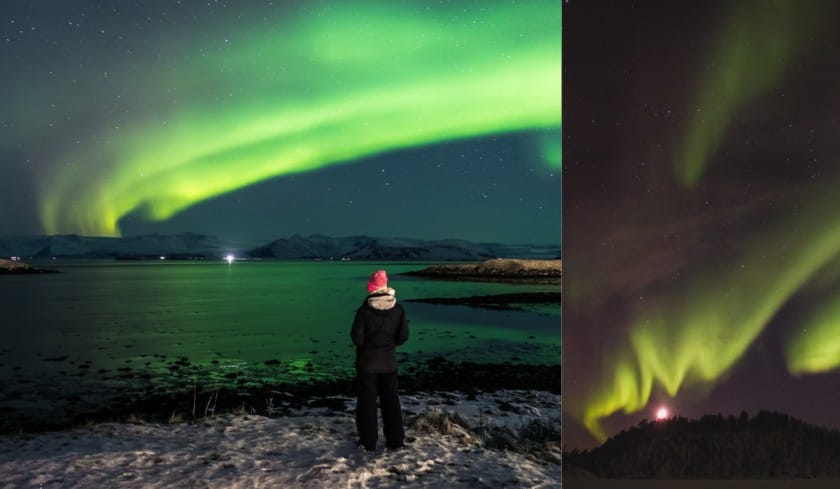Major Aurora Event Predicted for June 25
Great news for those who love watching the Northern Lights! On the night of June 25, there’s a good chance we’ll see a fantastic display in the sky. A stream of solar wind is expected to create some small to moderate geomagnetic storms, which could allow the beautiful auroras to be visible in 14 states across the United States. Don’t miss out on this potential spectacular show in the night sky!
The NOAA’s Space Weather Prediction Center forecasts the Kp index, which measures geomagnetic activity, to peak at 5.67. This level indicates a moderate G2 storm, meaning there will likely be noticeable Northern Lights
The Northern Lights, also known as the Aurora Borealis, could be visible in up to 15 states in the northern part of the United States from Tuesday night, June 24, to Wednesday night, June 25, according to the National Oceanic and Atmospheric Administration (NOAA).
Catch the live events here – Northern lights forecast, alerts, and geomagnetic storm warnings – live updates
Geographic Coverage and State Rankings
Highest Probability States
In the United States, Alaska is the best place to view the northern lights on June 25. If certain weather conditions are met, known as G2 storms, people may be able to see the Northern Lights as far away as New York and Idaho, and possibly even beyond those states, according to the National Oceanic and Atmospheric Administration (NOAA).
Here are 14 states where you may be able to see the northern lights tonight. This list, compiled by NOAA’s Space Weather Prediction Center, ranks the states from most likely to least likely to have visibility based on their proximity to the optimal viewing area.
States that could see auroras tonight
- Alaska
- Minnesota
- North Dakota
- Montana
- Maine
- Michigan
- Wisconsin
- Vermont
- New Hampshire
- Washington
- Oregon
- Idaho
- New York
- South Dakota
Regional Visibility Details
The aurora borealis is most visible in Canada. Alaska has some chance, but it won’t be dark enough at the best viewing times. There’s a low chance of seeing it in northern Iowa and other northern states, such as Wyoming, South Dakota, and parts of New York, New Hampshire, Vermont, and Maine. A better chance exists in Washington, northern Idaho, Montana, North Dakota, northern Minnesota, northern Wisconsin, and Upper Michigan.
Many people in Michigan may have the opportunity to see the Northern Lights on June 24 and 25. According to the NOAA’s Space Weather Prediction Center, even folks in cities like Grand Rapids, Lansing, and Port Huron could catch a glimpse of these beautiful lights dancing in the sky. Don’t miss out on this exciting opportunity to witness nature’s spectacular show!
These conditions could allow people in states like New York, Oregon, and South Dakota to see the Northern Lights on the northern horizon. This is especially likely if you’re in a location with minimal light pollution, making the sky appear darker and the stars more vivid.
Optimal Viewing Conditions
Timing and Location
The NOAA suggests finding a high place away from city lights to view the Northern Lights at their best. They recommend that the ideal time to watch for this beautiful natural display is between 10 p.m. and 2 a.m. If you’re in the right spot with good weather, you can even catch a glimpse of the Northern Lights when the geomagnetic activity is low, which means a Kp index of three or four.
The ideal time to see the Northern Lights is around 1 a.m. local time. Keep in mind that during the summer, the hours of darkness when we can spot the auroras become shorter. So, plan your viewing for late at night for the best chance to experience this beautiful natural display!
The UK Met Office reports that solar activity is currently low, but a strong wind is expected to reach Earth on June 25. This could increase the likelihood of witnessing beautiful auroras, particularly in northern regions. However, since we are close to the June solstice, the nights are short, and the bright evening light might make it harder to see the auroras in some places.
Northern Lights Forecast: Storm Impacts and Seasonal Patterns
NOAA is forecasting geomagnetic storms on Tuesday and Wednesday, with intensities ranging from mild to moderate. These storms could damage electrical systems in high-latitude areas and disrupt radio communication. On Wednesday, there’s a chance of seeing the Northern Lights due to increased storm activity.
The Northern Lights are visible all year but are most frequently seen from late September to March, when the nights are longer.
Viewing Expectations
Just keep in mind that auroras can be unpredictable. Sometimes, they can be seen much further south than expected, while at other times, they hardly appear at all. Many factors must come together for a great display. Tonight, more states might get to enjoy the auroras, or it could turn out that only a few will see them.
If you live in one of the 14 states that might see the northern lights tonight, find a good spot facing north where there aren’t a lot of bright lights around! Enjoy the show!
